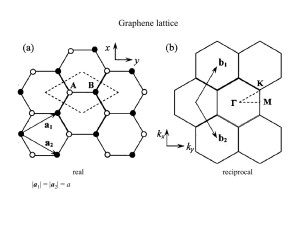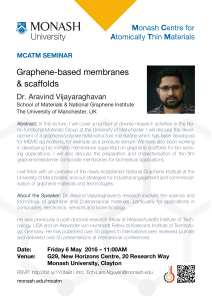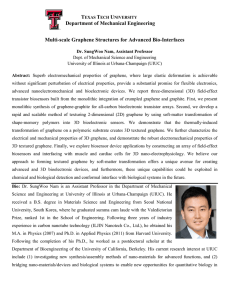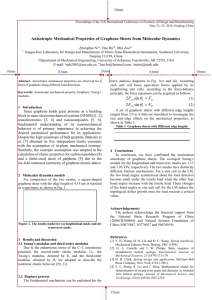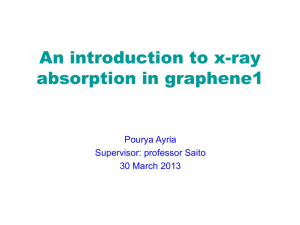Electronic Manipulation in Graphene Formed by Proton
advertisement
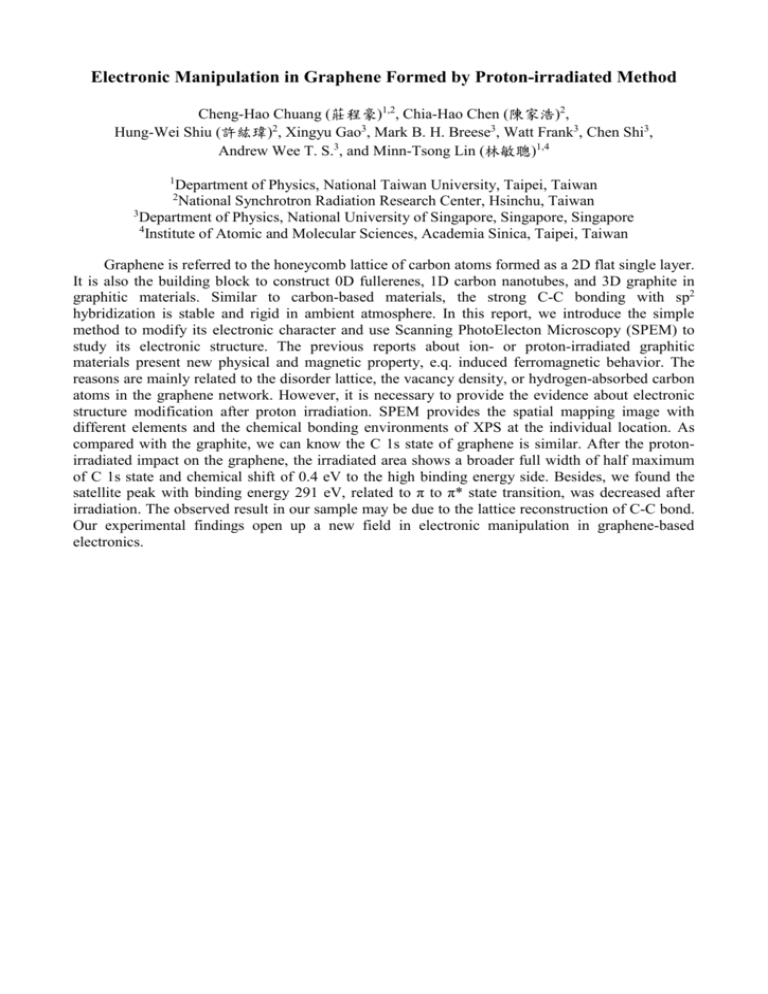
Electronic Manipulation in Graphene Formed by Proton-irradiated Method Cheng-Hao Chuang (莊程豪)1,2, Chia-Hao Chen (陳家浩)2, Hung-Wei Shiu (許紘瑋)2, Xingyu Gao3, Mark B. H. Breese3, Watt Frank3, Chen Shi3, Andrew Wee T. S.3, and Minn-Tsong Lin (林敏聰)1,4 1 Department of Physics, National Taiwan University, Taipei, Taiwan National Synchrotron Radiation Research Center, Hsinchu, Taiwan 3 Department of Physics, National University of Singapore, Singapore, Singapore 4 Institute of Atomic and Molecular Sciences, Academia Sinica, Taipei, Taiwan 2 Graphene is referred to the honeycomb lattice of carbon atoms formed as a 2D flat single layer. It is also the building block to construct 0D fullerenes, 1D carbon nanotubes, and 3D graphite in graphitic materials. Similar to carbon-based materials, the strong C-C bonding with sp2 hybridization is stable and rigid in ambient atmosphere. In this report, we introduce the simple method to modify its electronic character and use Scanning PhotoElecton Microscopy (SPEM) to study its electronic structure. The previous reports about ion- or proton-irradiated graphitic materials present new physical and magnetic property, e.q. induced ferromagnetic behavior. The reasons are mainly related to the disorder lattice, the vacancy density, or hydrogen-absorbed carbon atoms in the graphene network. However, it is necessary to provide the evidence about electronic structure modification after proton irradiation. SPEM provides the spatial mapping image with different elements and the chemical bonding environments of XPS at the individual location. As compared with the graphite, we can know the C 1s state of graphene is similar. After the protonirradiated impact on the graphene, the irradiated area shows a broader full width of half maximum of C 1s state and chemical shift of 0.4 eV to the high binding energy side. Besides, we found the satellite peak with binding energy 291 eV, related to π to π* state transition, was decreased after irradiation. The observed result in our sample may be due to the lattice reconstruction of C-C bond. Our experimental findings open up a new field in electronic manipulation in graphene-based electronics.



